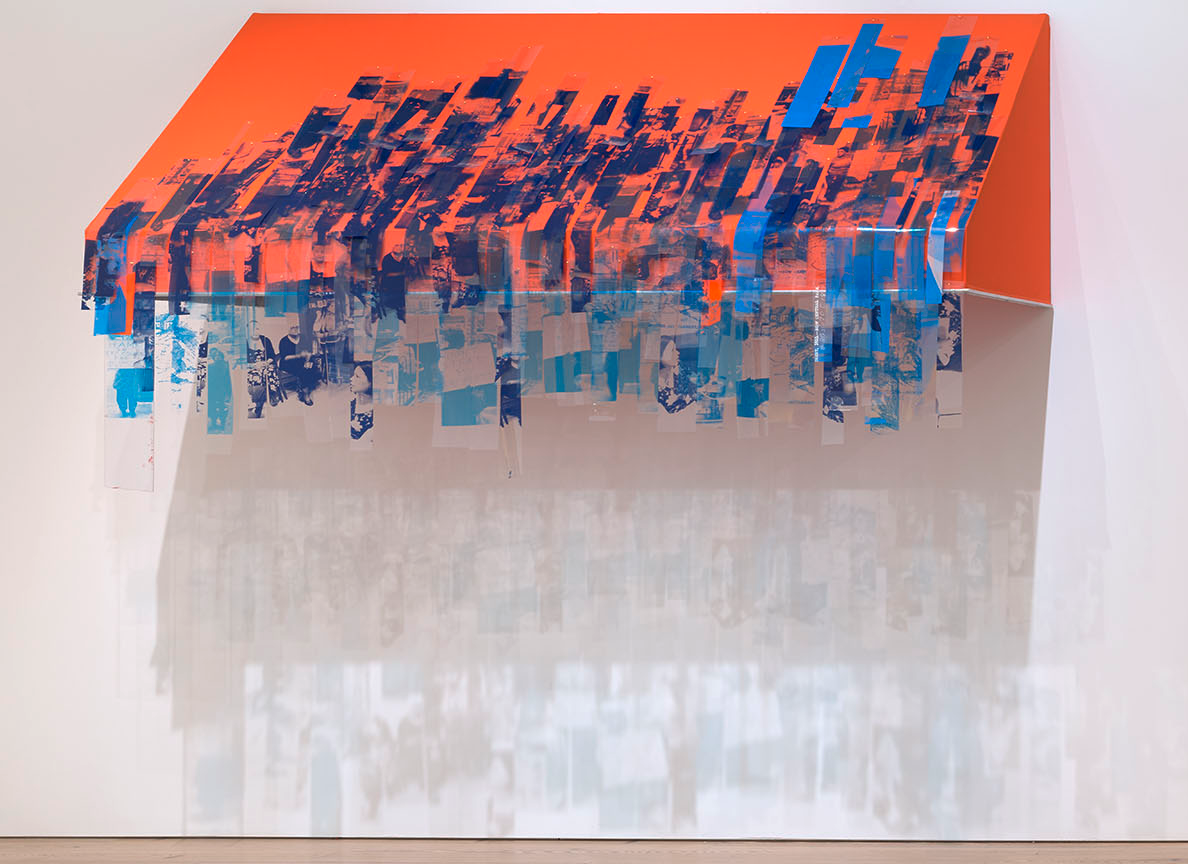Whitney Biennial 2019 | Art & Artists
May 17–Oct 27, 2019
Whitney Biennial 2019 | Art & Artists
Tomashi Jackson
35
Floor 6
Born 1980 in Houston, TX
Lives in New York, NY, and Cambridge, MA
Tomashi Jackson’s densely layered abstractions feature found materials—paper bags, food wrappers, vinyl insulation strips, and storefront awnings—many of them with specific autobiographical references. Jackson’s wide-ranging sources also intersect with art-historical, legal, and social histories, often using color materially to encourage meditation on painful subjects. Her three paintings presented in the Biennial focus on housing displacement in New York by exploring parallels between the history of Seneca Village—which was founded in Manhattan in 1825 by free Black laborers and razed in 1857 to make way for Central Park—and the city's current government program designed to seize paid-for properties in rapidly gentrifying communities across New York, regardless of mortgage status. Targeting elderly Black and Brown property owners, the program transfers ownership to developers. Interweaving these narratives visually and challenging the ways in which we see the information she includes, Jackson creates dynamic passages of clashing complementary hues. She also lights her surfaces so they resemble stained glass, refracting image and color cinematically onto surrounding spaces.
Third Party Transfer and the Making of Central Park (Seneca Village – Brooklyn 1853-2019), 2019
-
0:00
Tomashi Jackson
0:00
Tomashi Jackson: Color is not static. The perception of color is actually a relative concept and a relative phenomenon.
Narrator: Tomashi Jackson.
Tomashi Jackson: A part of how I work using color to visualize narratives of public concern, attempting to collapse histories using archival photography and contemporary photography, breaking them down into half-tone lines, and creating visual circumstances in which they become collapsed. The histories literally collapse.
This current body of work seeks to visualize stories of dispossession and displacement in New York City, specifically the displacement of Black and Brown communities. While reading the investigative journalism of Stephen Witt and Kelly Mena in Kings County Politics, I learned about the current situation of the Third-Party Transfer Program that's being used to justify sudden foreclosures and seizures of properties, fully paid for properties, mortgage-free properties in Black and Brown communities all around New York City.
City representatives say that their motivation is to restore the neighborhoods and to improve them and create “affordable housing” by displacing people who already live there. These aren't necessarily homes that are burned out and sitting vacant. They're fully occupied with tenants and residents.
I immediately thought of the story of Seneca Village, the collection of Black-owned properties that was razed in 1858 for the creation of present-day Central Park.

